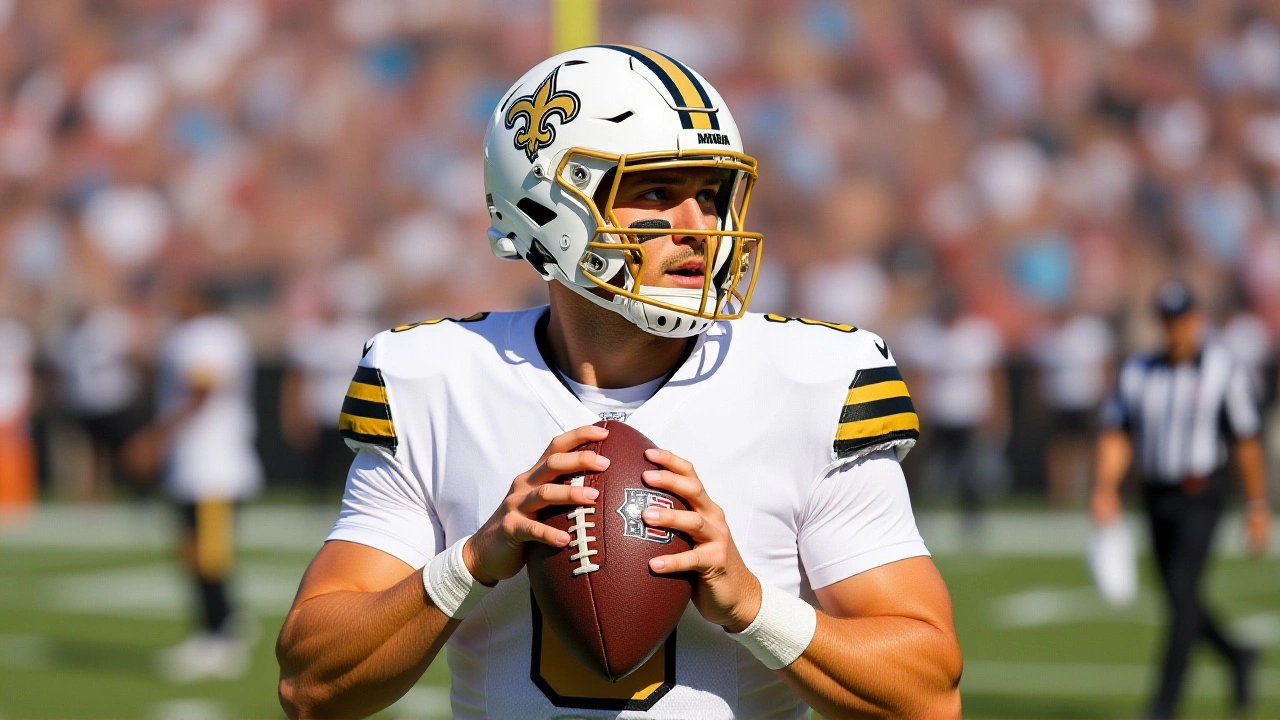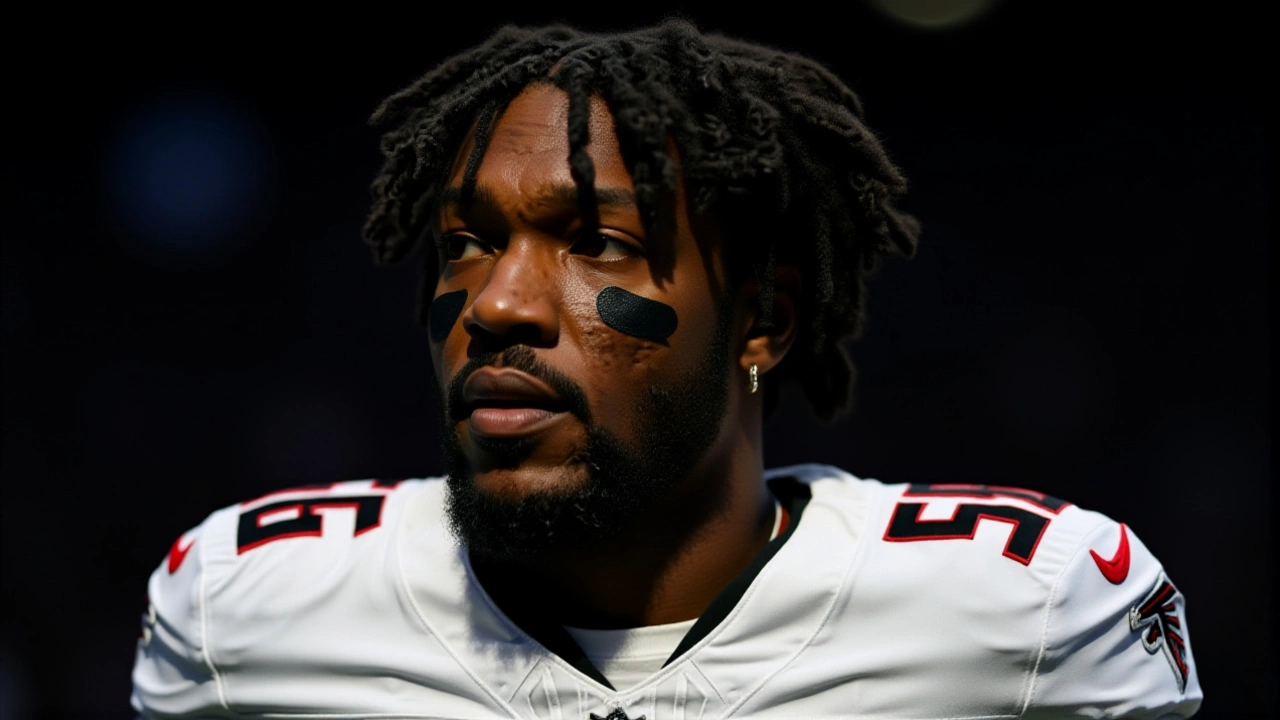When Alvin Kamara went down on the left sideline at the Caesars Superdome on Sunday, November 23, 2025, it wasn’t just another play gone wrong — it was the collapse of the New Orleans Saints’ offensive identity. The 30-year-old Pro Bowl running back, wearing jersey No. 41, twisted his right knee during a routine reception against Atlanta Falcons linebacker Kaden Elliss, a former teammate, and never returned. The Week 12 matchup ended 24-10, but the real damage was done before the final whistle. By halftime, Kamara was ruled out. By Monday, the diagnosis was confirmed: a medial collateral ligament (MCL) sprain. And now, with the Saints at 2-9, the question isn’t just how long he’ll be out — it’s whether they can survive without him.
The Moment It Happened
It was the first quarter, 12:47 remaining. Kamara, already questionable due to a nagging ankle issue, caught a short out-route near the sideline. Elliss closed in fast, wrapping him up low and twisting his body as he fell. Kamara’s knee buckled inward — no contact to the leg, no collision with another player. Just a sudden, awkward rotation. He dropped the ball instantly, clutched his knee with both hands, and stayed down. The crowd fell silent. Team trainers rushed out. He was carted to the medical tent, tested his knee on the sideline, even briefly put his helmet back on — a sign he was trying to fight through it. But the pain was too much. He didn’t return.
According to Ian Rapoport and Mike Garafolo of NFL Network, the initial belief was a sprain. Then, Nick Underhill of NewOrleans.Football confirmed the MCL tear, citing a source close to the team: "He avoided a major injury, but we’ll see how it progresses. Alvin and his team often beat timelines." That’s the kind of phrase that gives fans a sliver of hope — but also a warning. Kamara’s history of recovery is legendary. He once returned from a high-ankle sprain in six weeks. But MCL sprains? Those are different. Grade 2? That’s 4-6 weeks minimum. Grade 3? That’s season-ending.
The Offense Without Kamara
Without him, the Saints’ offense looked like a car missing its engine. Rookie Devin Neal took over as the lead back, finishing with 7 carries for 18 yards and 5 catches for 43 yards. Solid for a rookie, yes. But Kamara had 471 rushing yards and 186 receiving yards on the season before the injury — nearly 65% of the team’s total yards from scrimmage. Neal’s 61 yards? That’s less than half of what Kamara averaged per game.
The Saints managed just 79 rushing yards on 28 attempts. Third-down conversion rate? 5-of-16. Quarterback Tyler Shough, who completed 30-of-43 passes for 243 yards, admitted it bluntly: "He’s a great part of what we do as an offense. His absence affected our game plan hugely." Shough took five sacks and lost a fumble — not entirely his fault, but the offense had no rhythm, no play-action threat, no misdirection. Kamara’s presence forced defenses to respect the run. Without him, Atlanta stacked the box and blitzed relentlessly.
Running back Kendre Miller remains on IR with a knee injury. Audric Estime was a healthy scratch. So the Saints turned to Taysom Hill — yes, the quarterback-turned-fullback — for designed runs. It wasn’t enough. The Saints scored zero offensive touchdowns. Their only points came from a defensive fumble recovery and a field goal.

What This Means for the Season
The Saints entered the game already buried in the NFC South. Now, with Kamara out indefinitely, their playoff hopes are officially dead. But this isn’t just about wins and losses. It’s about identity. Kamara wasn’t just a runner. He was the catalyst. He was the player who turned 3-yard gains into 12-yard bursts. He was the safety valve on third-and-long. He was the reason defenses couldn’t focus solely on Michael Thomas — even though Thomas was also limited this season by injuries.
Coach Kellen Moore said Monday they’d wait for the MRI results before making any decisions. But the writing’s on the wall. If Kamara misses four weeks, the Saints will play their final six games without their best offensive player. If he misses six? They’ll be looking at a full offseason of rebuilding.
And here’s the twist: Kamara’s contract is up after this season. He’s a free agent. He’s 30. He’s played 108 games in six years. He’s carried the ball 1,000+ times. The Saints might have to decide: do they rebuild around him? Or do they let him walk, knowing they might never find another player like him?

What’s Next?
The MRI results are expected by Tuesday, November 25, 2025. The Saints will have to make a decision on whether to activate another running back from the practice squad — possibly Jahmyr Gibbs, a former Alabama standout now on the practice squad. But even if they do, they won’t get Kamara’s vision, his hands, his elusiveness. The team’s next three games — against Tampa Bay Buccaneers, Carolina Panthers, and Tennessee Titans — are winnable, but only if the defense carries them.
For now, the Saints are left with a question no team wants to face: How do you move forward when your most vital piece is gone?
Frequently Asked Questions
How serious is Alvin Kamara’s MCL sprain, and how long will he be out?
Kamara’s MCL sprain is currently classified as a Grade 2 injury, meaning a partial tear. Recovery typically takes 4 to 6 weeks, but given his history of accelerated rehab, he could return as early as Week 16 against the Buccaneers. However, if swelling persists or the ligament is more damaged than initially thought, he could miss the rest of the season. The Saints are being cautious — he’s a franchise cornerstone, and rushing him back could risk long-term damage.
Who will replace Kamara in the Saints’ backfield?
Rookie Devin Neal is the primary replacement, but he’s unproven in a lead role. The Saints may activate Jahmyr Gibbs from the practice squad, and Taysom Hill will continue to be used in short-yardage and gadget plays. But none of them offer Kamara’s dual-threat ability — the team’s passing game will likely rely even more on Tyler Shough and the tight ends.
Did the Falcons intentionally target Kamara?
No evidence suggests intentional targeting. Kaden Elliss, a former Saint, was simply making a routine tackle on a short pass. The injury occurred due to an awkward twist as Kamara landed, not a late hit or dangerous move. NFL officials reviewed the play and took no action. Elliss was visibly shaken afterward, hugging Kamara as he left the field — a moment that spoke louder than any statement.
How does this affect the Saints’ future draft picks and roster decisions?
With Kamara’s contract expiring after 2025 and his age rising, the Saints now face a pivotal offseason. If he returns to form, they may offer a short-term deal. If he doesn’t, they’ll likely prioritize drafting a running back in the first or second round. His absence has exposed the lack of depth — and the team’s over-reliance on one player. This injury could force a complete offensive rebuild.
Has any other NFL star had a similar injury and come back strong?
Yes. Christian McCaffrey returned from a Grade 2 MCL sprain in 2021 and had a Pro Bowl season the next year. Le’Veon Bell and Ezekiel Elliott also returned from similar injuries with minimal drop-off. But each case is different. Kamara’s workload — 1,000+ touches over six years — makes his recovery more complex than most.
What’s the emotional impact on the Saints’ locker room?
The mood is somber. Teammates described Kamara as the team’s emotional engine — always joking, always energizing. After the game, multiple players posted messages on social media with #KamaraStrong. Even backup quarterbacks said they’d never seen an offense so flat without him. His absence isn’t just statistical — it’s psychological. The team’s spirit, more than its scheme, is now in question.
